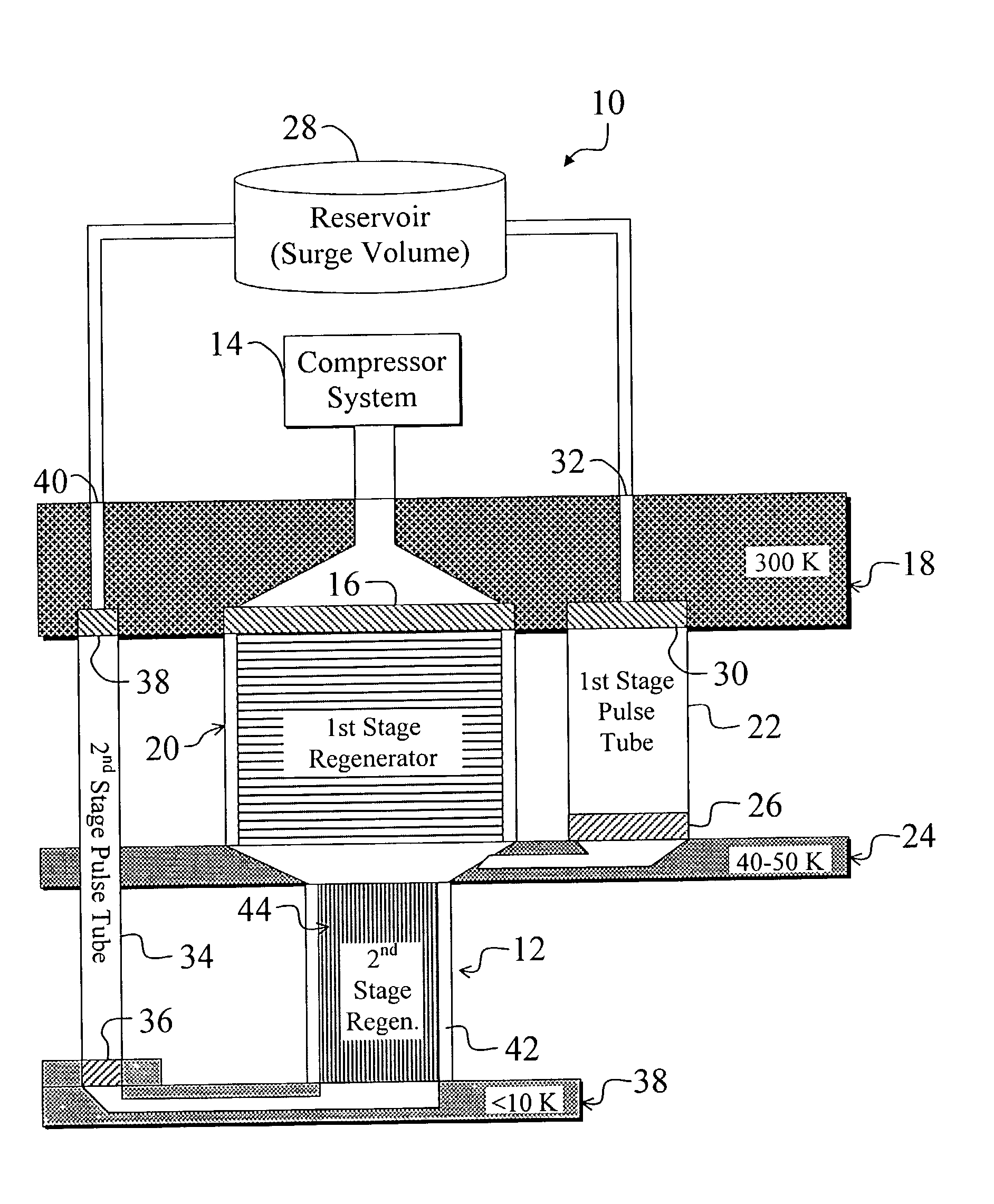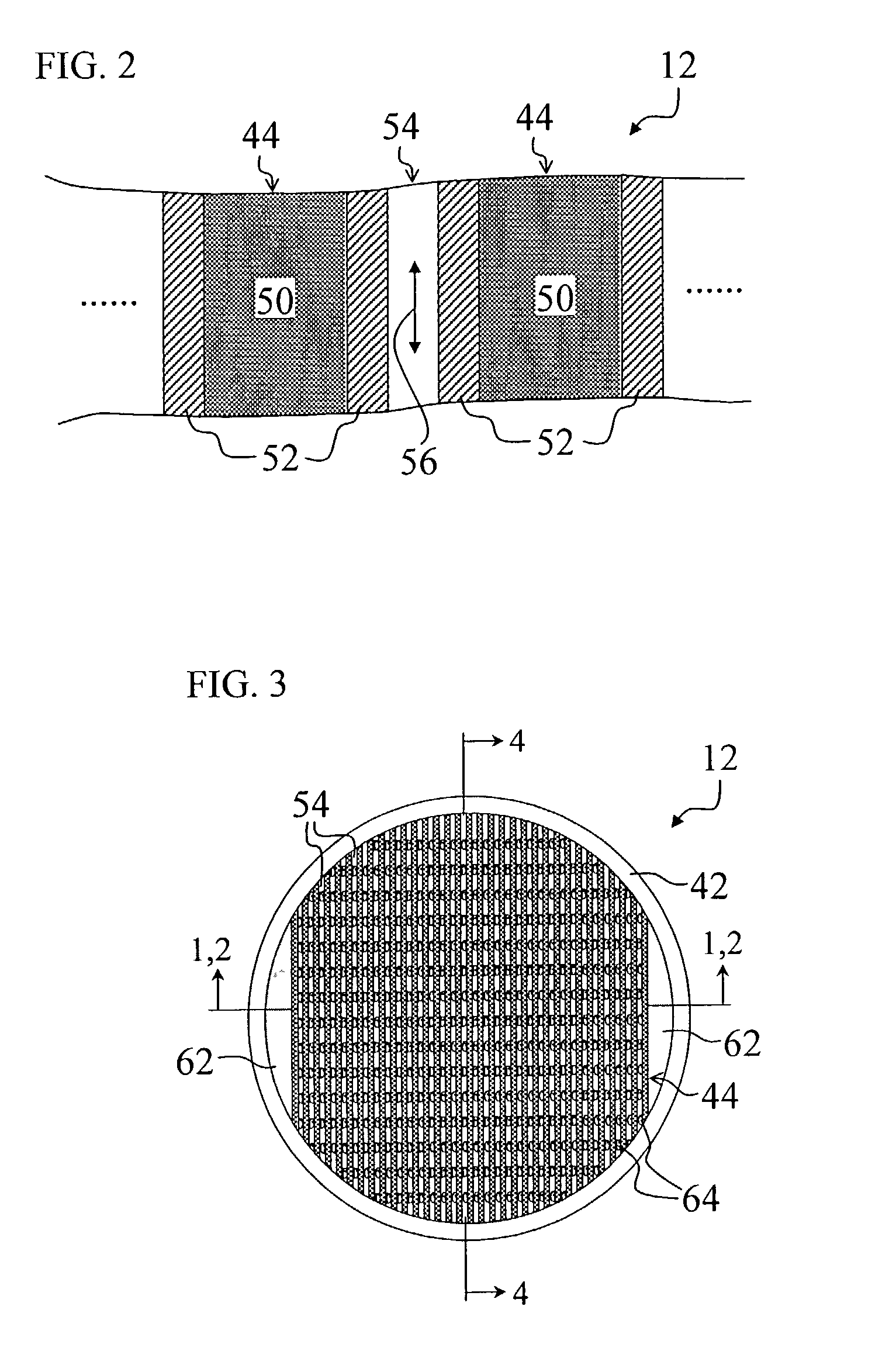High-frequency, low-temperature regenerative heat exchanger
a regenerative heat exchanger, low-temperature technology, applied in the direction of domestic cooling equipment, lighting and heating equipment, machines/engines, etc., can solve the problems of low efficiency of cryogen storage tanks and accompanying insulation and thermal-structural isolators, inability to meet long-life space-based applications, and inability to meet the requirements of long-life space-based applications
- Summary
- Abstract
- Description
- Claims
- Application Information
AI Technical Summary
Problems solved by technology
Method used
Image
Examples
Embodiment Construction
[0032] While the present invention is described herein with reference to illustrative embodiments for particular applications, it should be understood that the invention is not limited thereto. Those having ordinary skill in the art and access to the teachings provided herein will recognize additional modifications, applications, and embodiments within the scope thereof and additional fields in which the present invention would be of significant utility.
[0033] FIG. 1 is a block diagram of an exemplary two-stage pulse tube cryocooler 10 employing an efficient second stage regenerator 12 constructed in accordance with the teachings of the present invention. For clarity, various well-known components, such as power supplies, motors, compressor valves, acoustic phase shift networks, and so on, have been omitted from the figures, however those skilled in the art with access to the present teachings will know which components to implement and how to implement them to meet the needs of a g...
PUM
| Property | Measurement | Unit |
|---|---|---|
| temperatures | aaaaa | aaaaa |
| operating frequency | aaaaa | aaaaa |
| thickness | aaaaa | aaaaa |
Abstract
Description
Claims
Application Information
 Login to View More
Login to View More - R&D
- Intellectual Property
- Life Sciences
- Materials
- Tech Scout
- Unparalleled Data Quality
- Higher Quality Content
- 60% Fewer Hallucinations
Browse by: Latest US Patents, China's latest patents, Technical Efficacy Thesaurus, Application Domain, Technology Topic, Popular Technical Reports.
© 2025 PatSnap. All rights reserved.Legal|Privacy policy|Modern Slavery Act Transparency Statement|Sitemap|About US| Contact US: help@patsnap.com



